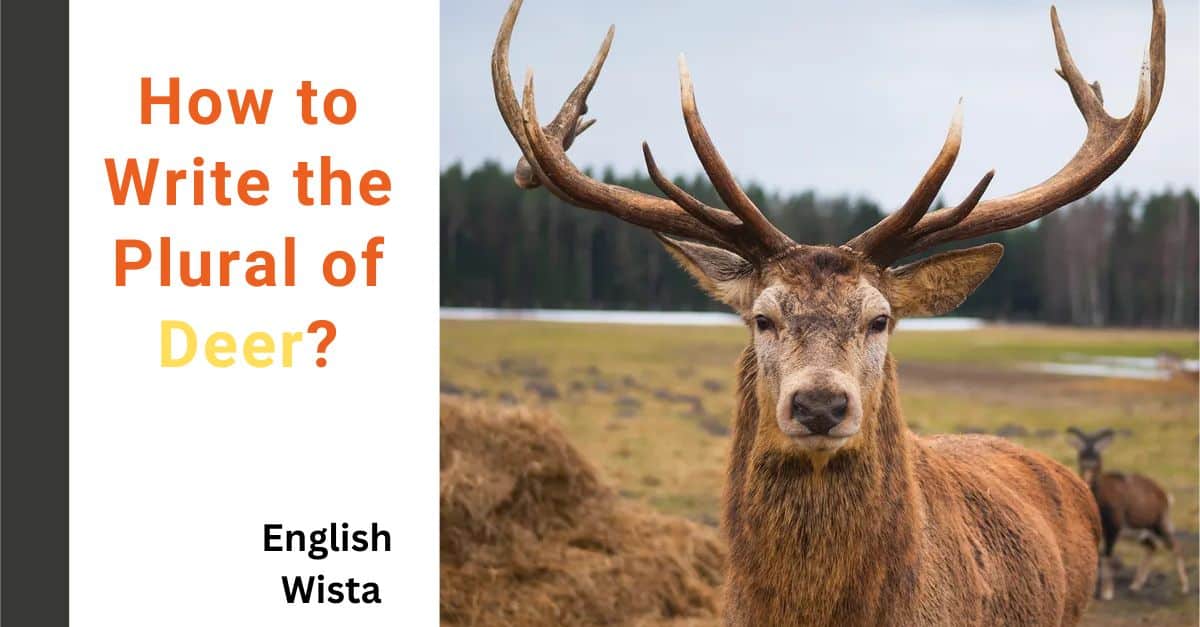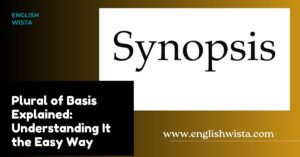The plural of deer might seem like a simple question, but it’s one that trips up even native English speakers. Have you ever paused and wondered, “Is it deer or deers?” Well, you’re not alone! English is full of quirky rules, and this one is no exception.
If you’re curious about why the word “deer” doesn’t follow the usual plural rules—or if you just want to feel confident using it in sentences—you’re in the right place. Let’s uncover the mystery behind this unique word and explore some fun facts along the way. You’ll be a pro in no time!
What Is the Plural of Deer?
Here’s the straightforward answer: The plural of “deer” is “deer.”
Yes, that’s right—the word stays the same whether you’re talking about one deer or a whole group of them. For example:
- Singular: I saw a deer in the woods.
- Plural: We spotted five deer by the river.
No added letters, no fancy endings. Just “deer.”
Why Doesn’t “Deer” Change in the Plural?
In English, most nouns become plural by adding “-s” or “-es” (like cats or boxes). So, why doesn’t “deer” follow this pattern? The answer lies in the history of the English language.
The word “deer” comes from Old English, where it was spelled as “dēor.” Back then, it didn’t refer specifically to the animal we know today. Instead, it meant any wild animal! Over time, the meaning narrowed to just the graceful creatures we call deer today.
In Old English and other Germanic languages, certain words didn’t change form in the plural. These words are called “zero plurals” because they look the same whether singular or plural. Other examples include:
- Sheep: One sheep, many sheep.
- Fish: A fish swims here, and a school of fish swims there.
- Moose: One moose or a group of moose—it’s all the same!
“Deer” follows this same rule. Pretty neat, right?
Is “Deers” Ever Correct?
You might be wondering, “What about ‘deers’? Is that a word?” Technically, yes, but it’s rarely used.
“Deers” can appear when talking about different species of deer. For example:
- The park has many kinds of deers, including white-tailed deer and red deer.
However, this usage is uncommon. In everyday conversation, it’s best to stick with “deer” for both singular and plural forms.
How to Use “Deer” in Sentences
Let’s look at some practical examples to see “deer” in action.
- Singular:
- A deer crossed the road this morning.
- The deer in my backyard loves eating apples.
- Plural:
- We saw three deer near the lake.
- Hunters often look for deer in the fall.
Notice how the word doesn’t change, even when the number does? This consistency makes it easier to use!
Other Animal Words with the Same Rule
Now that you know about “deer,” let’s explore some other animals that follow the zero-plural rule:
- Sheep:
- Singular: The sheep is grazing in the meadow.
- Plural: The sheep are grazing in the meadow.
- Fish:
- Singular: I caught a fish.
- Plural: We caught ten fish.
- Bison:
- Singular: A bison roams the prairie.
- Plural: Bison roam the prairie.
Learning these patterns can help you spot and use zero plurals more confidently in the future.
Fun Facts About Deer
Want to impress your friends with some cool deer trivia? Here are a few fun facts:
- Deer are amazing jumpers. They can leap up to 10 feet high and 30 feet forward in a single bound!
- Antlers are unique. Only male deer (except for reindeer) grow antlers, which they shed and regrow every year.
- Deer communicate in subtle ways. They use tail movements, scents, and even facial expressions to send messages.
Knowing these facts might make you appreciate these graceful animals even more.
Collective Nouns for Deer
Did you know there’s a special term for a group of deer? It’s called a “herd.” For example:
- We saw a herd of deer grazing in the meadow.
Other collective nouns for deer, though less common, include “mob” or “parcel.”
Why English Has So Many Exceptions
English is full of quirky rules and exceptions, and the zero plural is just one of them. Words like “deer” remind us that language evolves over time. It borrows from other languages, adapts to new contexts, and sometimes just doesn’t follow the rules we expect.
While this can be frustrating for learners, it also makes English interesting and dynamic!
Takeaway Tips for Using “Deer” Correctly
Let’s sum it up with a few easy tips:
- The plural of “deer” is always “deer.”
- Use “deers” only when referring to multiple species (and even then, it’s rare).
- Remember other zero-plural words like sheep, fish, and bison to spot similar patterns.
- Practice with sentences to get comfortable using the word naturally.
Conclusion: Now You Know!
Understanding the plural of “deer” is simpler than it seems. Whether you’re talking about one deer or a whole herd, the word stays the same. This rule might feel unusual at first, but it’s just one of those fun quirks of the English language.
So the next time you see a deer—or many deer—you’ll know exactly how to talk about them. Isn’t learning language fun? Keep exploring and enjoy the journey!



